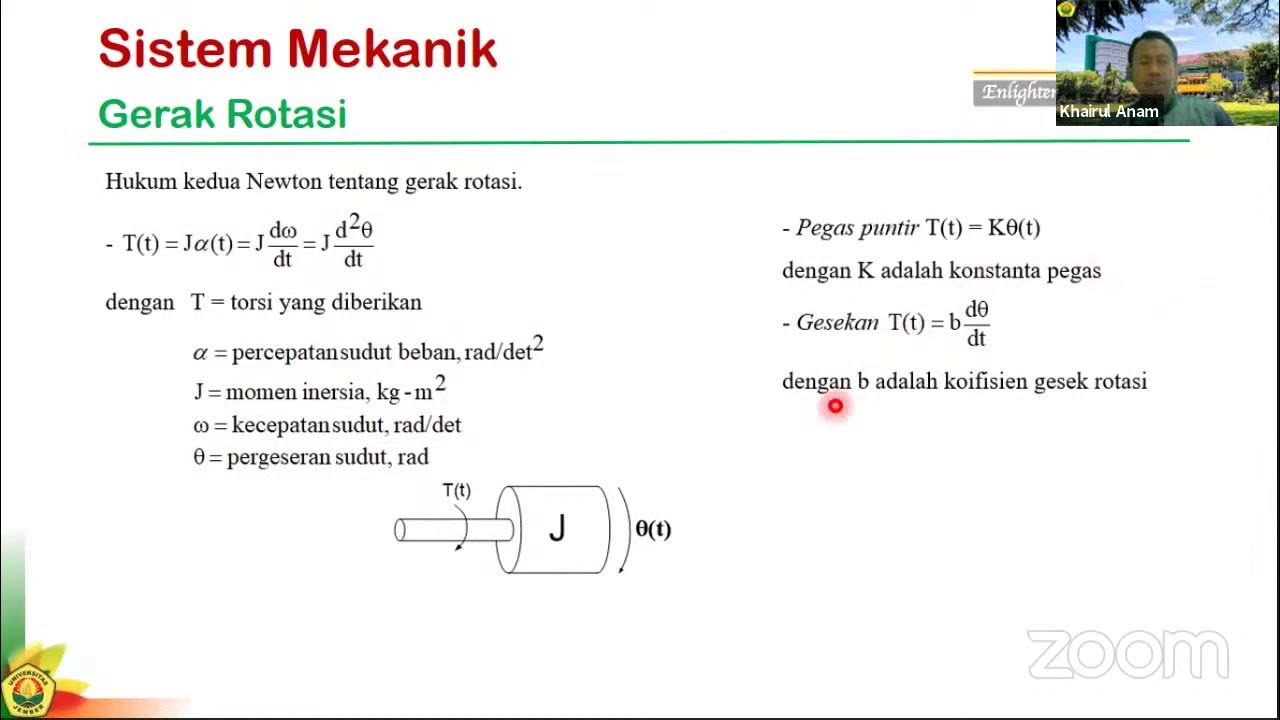Welcome - Math Modelling | Intro Lecture
Summary
TLDRThis lecture introduces the basics of mathematical modeling, covering its applications across biological, chemical, physical, and sociological phenomena. The course will begin with optimization techniques, followed by a deep dive into differential equations and stochastic models. Emphasizing the importance of assumptions, building on past work, and iterative criticism, the lecture outlines the process of creating and refining mathematical models. The five-step method for approaching modeling will be introduced, which will guide students throughout the course.
Takeaways
- 📘 The lecture series focuses on mathematical modeling, exploring how mathematics can describe biological, chemical, physical, and sociological phenomena.
- 📈 The course begins with optimization, covering how to find maximum and minimum values, often in contexts like profit models.
- 📊 Students will then study differential equations, especially dynamical systems in one and two dimensions, including phase plane analysis.
- 🎲 The course concludes with stochastic models, particularly Markov chains, to understand systems with randomness.
- 💡 Mathematical modeling seeks to simplify complex real-world systems while retaining essential features that capture the phenomena accurately.
- 🧮 The class will rely on tools from linear algebra, calculus, and probability theory, with opportunities to learn new mathematics while solving models.
- ⚖️ Effective models balance simplicity and realism—too simple loses accuracy, too complex becomes unsolvable.
- 🔤 The ABCs of modeling are: A – Make assumptions, B – Borrow existing knowledge, C – Criticize and refine the model.
- 🧠 Assumptions simplify the problem but must be chosen carefully to avoid straying too far from reality.
- 👩🔬 Borrowing from existing scientific laws (like Newton’s laws) helps build on established understanding rather than starting from scratch.
- 🗣️ Criticizing is an essential part of modeling—evaluating whether the model truly captures the intended phenomena and refining it as needed.
- 🎯 The instructor emphasizes that modeling aims for useful approximations, not perfect precision, since overly precise equations can become impractically complex.
- 🚀 The first lecture introduces a five-step approach to mathematical modeling, which will guide all subsequent topics in the course.
- 🤝 The lecturer encourages active engagement, critical thinking, and iterative improvement throughout the course.
Q & A
What is the focus of the lecture series?
-The lecture series focuses on mathematical modeling, including topics like optimization, differential equations, dynamical systems, phase planes, and stochastic models such as Markov chains.
What are the main topics that will be covered in this course?
-The main topics include optimization, differential equations (with an emphasis on dynamical systems in one and two dimensions), and stochastic models, particularly Markov chains.
What is mathematical modeling, according to the lecture?
-Mathematical modeling is the process of using mathematical tools to represent and understand real-world phenomena, including biological, chemical, physical, and sociological systems.
What is the role of optimization in mathematical modeling?
-Optimization is used to find the maximum or minimum values in models, such as profit models, which help in making decisions based on mathematical calculations of different variables.
Why are assumptions important in mathematical modeling?
-Assumptions are essential because they simplify complex real-world phenomena to make them mathematically manageable. However, too many assumptions can lead to models that are too far removed from reality, so it's important to find a balanced approach.
How does the course approach learning new mathematical techniques?
-The course assumes familiarity with basic mathematics, including linear algebra, calculus, and probability theory. Throughout the course, students will learn new mathematical techniques as they apply them to solving models.
What does the lecturer mean by 'standing on the shoulders of giants'?
-The phrase means that the course will build on established work and theories, such as physical laws, rather than starting from scratch. For example, Newton’s laws help understand how velocity and acceleration relate to force.
What are the three key steps in the mathematical modeling process, according to the lecturer?
-The three key steps in the modeling process are: making assumptions (A), borrowing existing knowledge (B), and criticizing the model (C) to refine and improve it.
Why is criticism a vital part of mathematical modeling?
-Criticism allows us to assess whether the model captures the phenomenon accurately. It helps in identifying missed aspects, refining assumptions, and ensuring the model provides meaningful insights without aiming for unnecessary precision.
What will students learn about mathematical modeling in this course?
-Students will learn how to develop, analyze, and refine mathematical models to understand and predict real-world phenomena, using a combination of techniques from linear algebra, calculus, and probability.
Outlines

此内容仅限付费用户访问。 请升级后访问。
立即升级Mindmap

此内容仅限付费用户访问。 请升级后访问。
立即升级Keywords

此内容仅限付费用户访问。 请升级后访问。
立即升级Highlights

此内容仅限付费用户访问。 请升级后访问。
立即升级Transcripts

此内容仅限付费用户访问。 请升级后访问。
立即升级浏览更多相关视频

Lecture 1: Basics of Mathematical Modeling

[OS1] Pendahuluan Oseanografi | Materi Ringkas OSN/KSN Kebumian Geografi SMA

Class 10 Science | Chemical Reactions And Equations | Characters of Chemical Reactions | Ashu Sir

SK#2c: Pemodelan Sistem dengan Persamaan Differensial

PENGENALAN ILMU KIMIA

The Beauty and Power of Mathematics | William Tavernetti | TEDxUCDavis
5.0 / 5 (0 votes)
